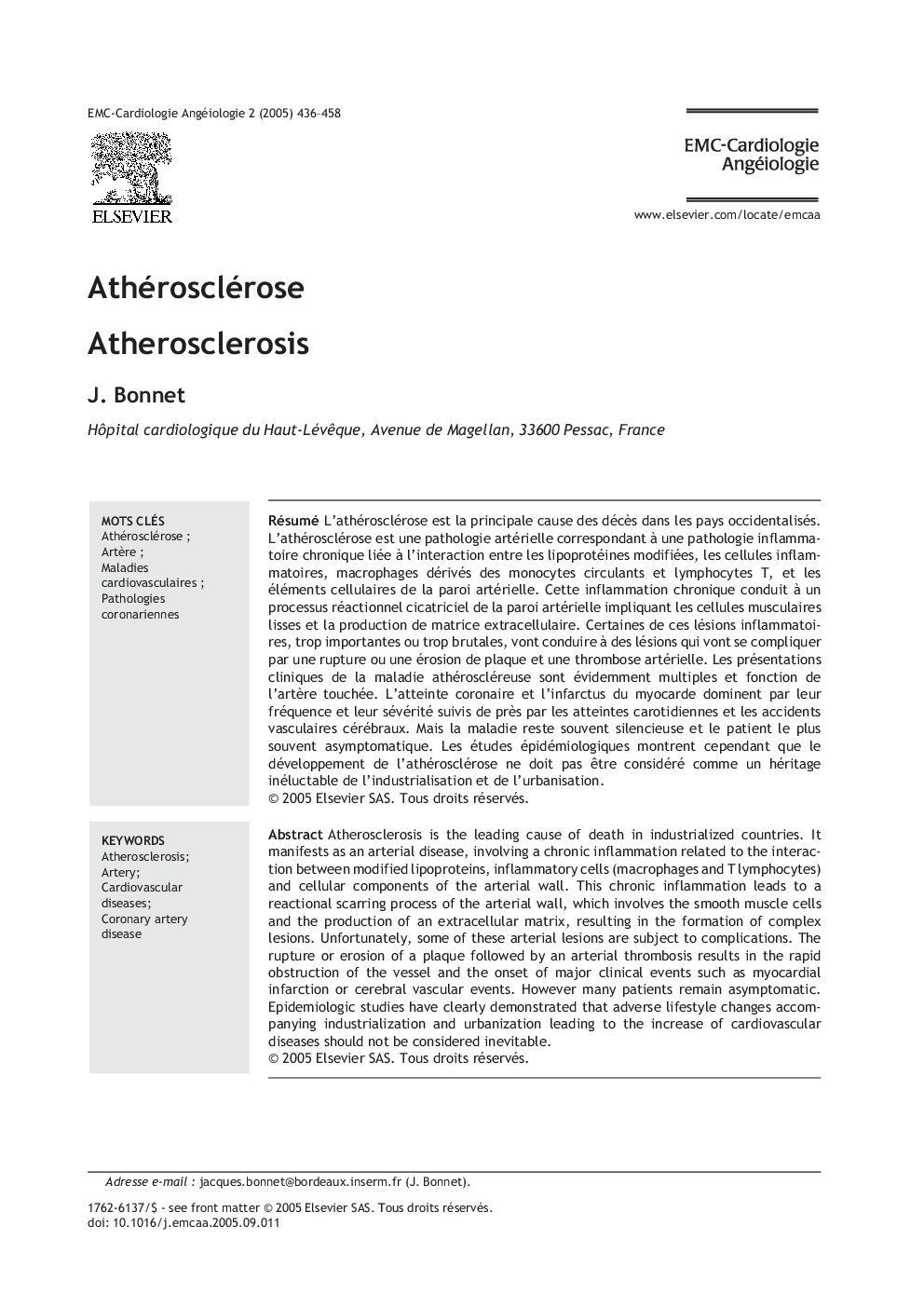| Article ID | Journal | Published Year | Pages | File Type |
|---|---|---|---|---|
| 9167403 | EMC - Cardiologie-Angéiologie | 2005 | 23 Pages |
Abstract
Atherosclerosis is the leading cause of death in industrialized countries. It manifests as an arterial disease, involving a chronic inflammation related to the interaction between modified lipoproteins, inflammatory cells (macrophages and T lymphocytes) and cellular components of the arterial wall. This chronic inflammation leads to a reactional scarring process of the arterial wall, which involves the smooth muscle cells and the production of an extracellular matrix, resulting in the formation of complex lesions. Unfortunately, some of these arterial lesions are subject to complications. The rupture or erosion of a plaque followed by an arterial thrombosis results in the rapid obstruction of the vessel and the onset of major clinical events such as myocardial infarction or cerebral vascular events. However many patients remain asymptomatic. Epidemiologic studies have clearly demonstrated that adverse lifestyle changes accompanying industrialization and urbanization leading to the increase of cardiovascular diseases should not be considered inevitable.
Keywords
Related Topics
Health Sciences
Medicine and Dentistry
Cardiology and Cardiovascular Medicine
Authors
J. Bonnet,
